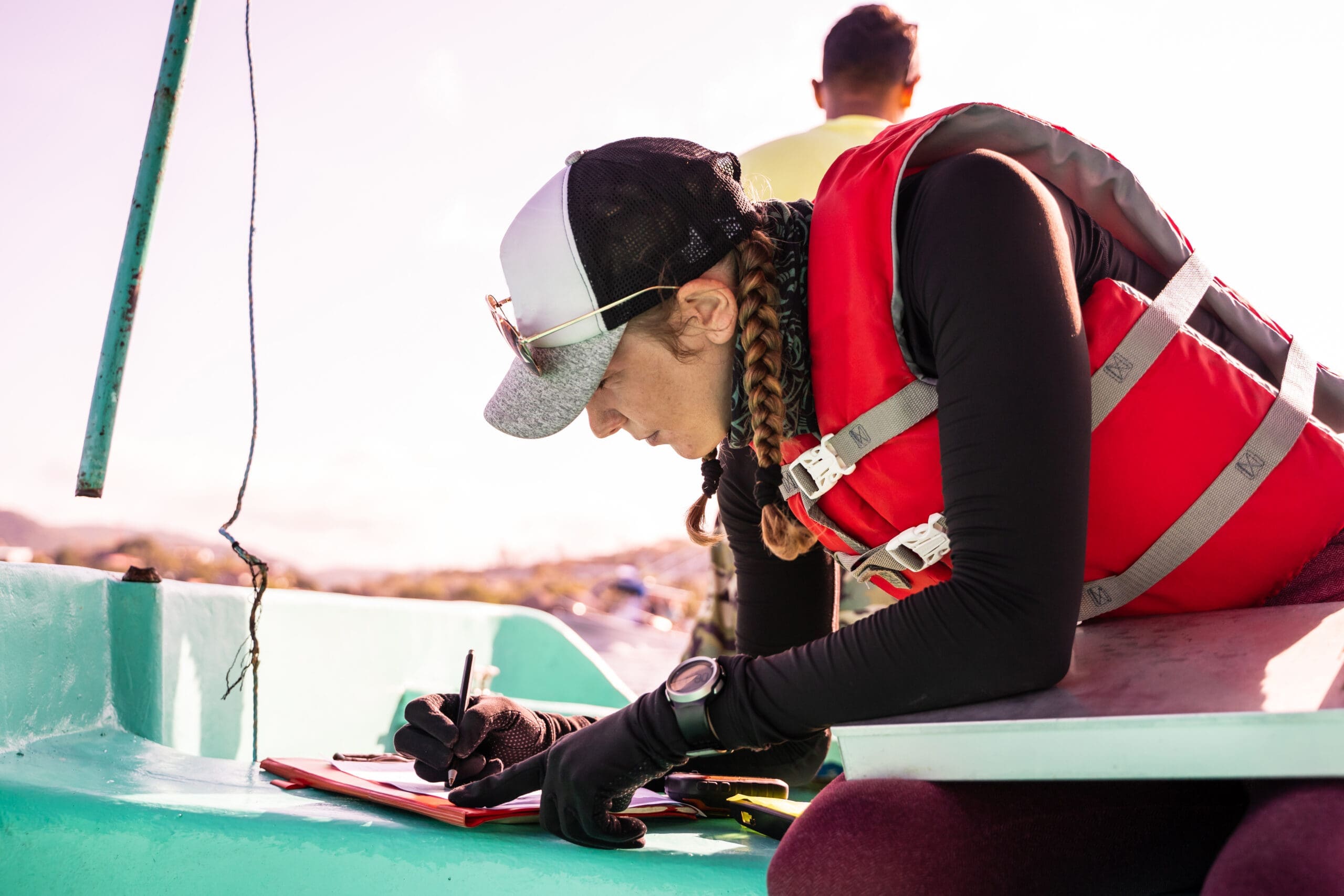Environmental Impact Assessment Framework for Marine Carbon Dioxide Removal
Ocean Visions is leading the development of the first comprehensive Environmental Impact Assessment Framework (EIAF) for marine carbon dioxide removal (mCDR)—a critical tool to guide responsible development of mCDR. The EIAF will serve as a standardized resource for assessing both the risks and benefits of various mCDR approaches, ensuring that these interventions are tested in ways that are effective, equitable, and aligned with the health of ocean ecosystems.
Why This Framework Matters
As the world confronts the urgent challenge of climate change, the Intergovernmental Panel on Climate Change (IPCC) has made clear that large-scale carbon dioxide removal (CDR) is essential for meeting climate targets. Among the various CDR approaches, mCDR has significant potential as an ocean-climate solution: the ocean already holds more carbon than any other part of the Earth’s living system and its sheer size means that any mCDR approaches demonstrated to be effective at removing carbon and ecologically safe have the potential to be scaled.
While there has been rapid growth in the understanding of mCDR, fundamental questions about efficacy and impacts remain. Answering these unresolved questions requires multi-scale, controlled ocean testing, but a lack of comprehensive data and standardized methods for assessing the potential environmental impacts of mCDR hinders informed decision-making by project developers, researchers, regulators, and local communities considering whether they can safely host an mCDR project.


What the Framework Will Provide
Once completed, the EIAF will:
- Identify and then minimize potential negative impacts on marine ecosystems and the communities that rely on the health of those ecosystems
- Facilitate public consultation and dialogue
- Create compliance structures for mCDR proposals
This framework will be adaptable to a wide range of mCDR techniques, including ocean alkalinity enhancement, growing macroalgae and microalgae, direct ocean capture, and more.
Development Partners and Process
Ocean Visions is driving this effort by bringing together a multidisciplinary team of experts in ocean science, environmental impact assessment, carbon dioxide removal, and policy.
Following a competitive request-for-proposals process, Ocean Visions selected Fugro as the project lead in collaboration with Integral Consulting and the National Oceanography Centre in the UK. Over a 24-month period, this team will work with interested parties around the world to ensure that the framework is rigorous, implementable, and globally relevant. Key goals of the development process include:
- Creating a transparent, participatory process that includes diverse expertise
- Grounding the framework in the best available science
- Designing tools that are practical for both researchers and regulators
In the second half of 2025, the team will conduct desktop research and literature reviewing to synthesize a draft EIAF based on existing EIAFs for adjacent marine industries and informed by the best available knowledge for mCDR. This draft framework will be publicly available and will serve as the basis for extensive consultative engagement over the following 18 months with regulators, researchers, project developers, and local communities that will iteratively revise this draft framework to ultimately deliver the final, open EIAF.
Supporting Informed and Responsible Innovation
Ocean Visions envisions a future in which marine carbon dioxide removal is pursued thoughtfully—only when it can be shown to be effective, low-risk, and socially responsible.
The mCDR EIAF is a foundational step toward that. By providing clear standards and processes, the EIAF will help ensure that testing is driven by science, informed by community needs, and aligned with global climate and ecosystem health goals.
LEARN MORE
Questions/Comments? Contact us: info@oceanvisions.org
CONTRIBUTE
Contribute to this effort by sharing relevant resources and perspective using this intake form: